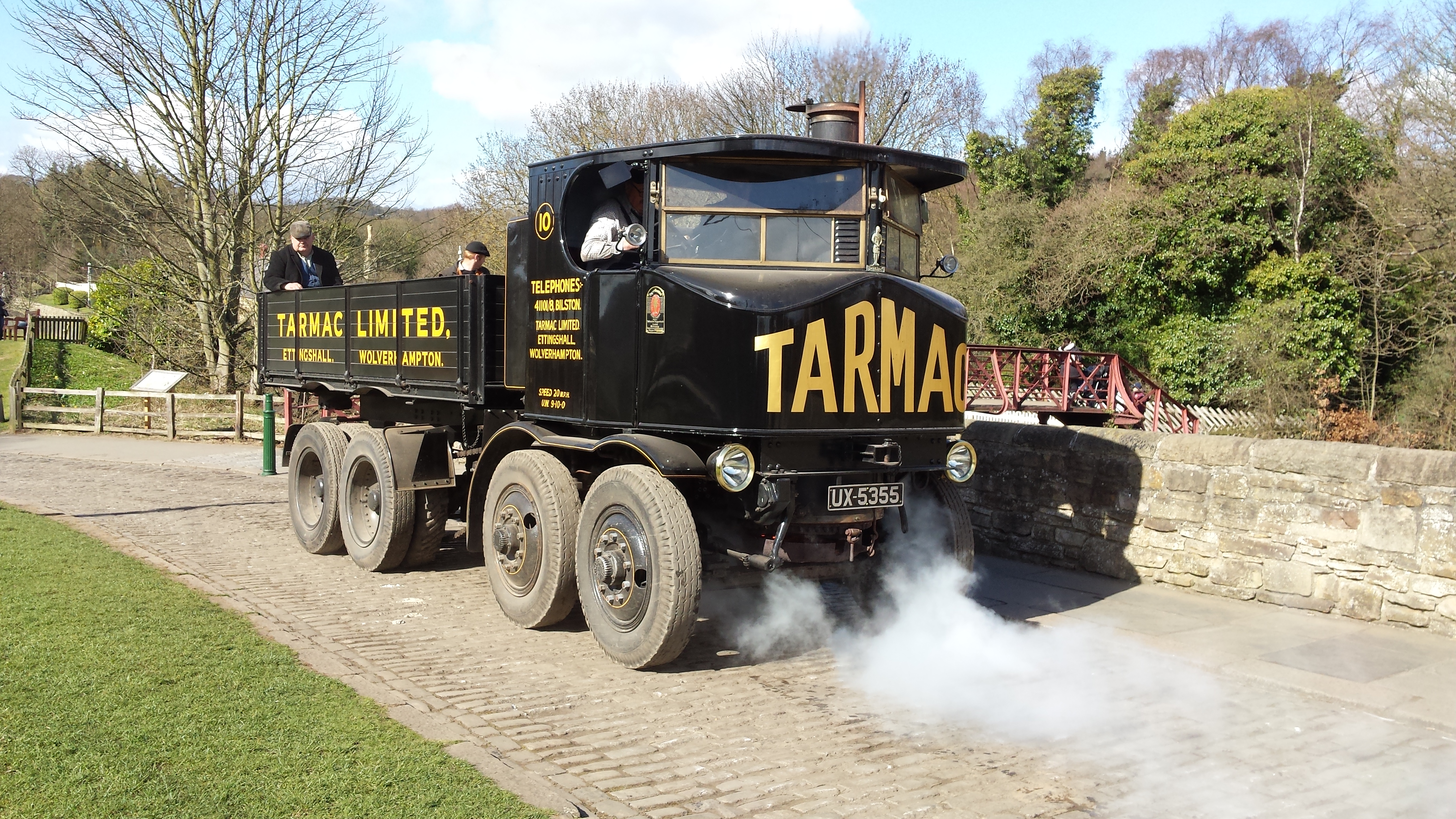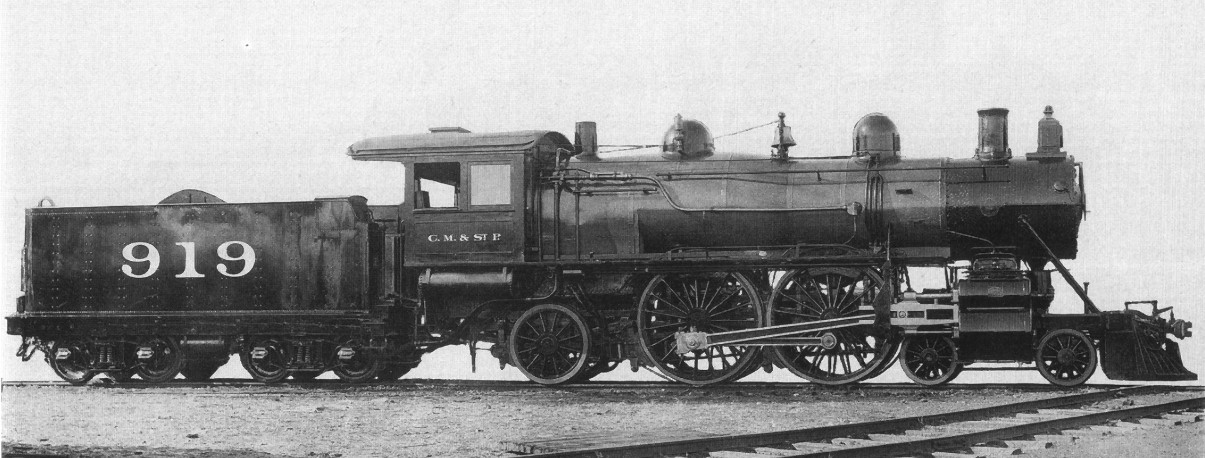|
LMS Sentinel 7164
The London, Midland and Scottish Railway (LMS) Sentinel No. 7164, (later 7184 and under British Railways, 47184) was a small shunting locomotive. Its design was that of the single-speed Sentinel, a vertical-boilered geared steam locomotive, geared locomotive, using Sentinel Waggon Works, Sentinel's standard Sentinel boiler, vertical boiler and steam motor design. This was the smallest of the four Sentinel classes used by the LMS. Design 7164 was the LMS' only example of the early Sentinel BE or 'Balanced Engine' design, rather than the later CE or 'Central Engine' design used for LMS Sentinels 7160–7163, 7160–7163. This placed the boiler and engine at opposite ends of the frames, with the water tank in the centre. Although the LNER Class Y1 Sentinel was also a single-speed, they were of the larger Central Engine design and were similar to the two-speed locomotives in appearance. Service Built in 1931 by Sentinel Waggon Works as Works No. 8593, it was taken into LMS stock ... [...More Info...] [...Related Items...] OR: [Wikipedia] [Google] [Baidu] |
Sentinel Waggon Works
Sentinel Waggon Works Ltd was a British company based in Shrewsbury, Shropshire that made steam-powered lorry, lorries (steam wagons), railway locomotives, and later, diesel engined lorries, buses and locomotives. History Alley & MacLellan, Sentinel Works, Jessie Street Glasgow Alley & MacLellan was founded in 1875 and was based in Polmadie, Glasgow. This company continued in operation until the 1950s. Initially manufacturing valves and compressors for steam engines, and later whole steamships, Alley & MacLellan acquired Simpson and Bibby of Horsehay, Shropshire, manufacturer of steam-powered road vehicles, in 1903. They began producing steam road vehicles in 1905 and in 1906 introduced a five-ton vertical-boiler steam wagon, which featured a two-cylinder undertype engine and chain drive. Around 1915, Alley & McLellan moved the steam wagon production to a new factory in Shrewsbury and it continued under a separate company (see below), and in 1918 the company also opened A ... [...More Info...] [...Related Items...] OR: [Wikipedia] [Google] [Baidu] |
Radstock
Radstock is a town and civil parish on the northern slope of the Mendip Hills in Somerset, England, about south-west of Bath and north-west of Frome. It is within the area of the unitary authority of Bath and North East Somerset. The Radstock built-up area had a population of 9,419 at the 2011 Census. Radstock has been settled since the Iron Age, and its importance grew after the construction of the Fosse Way, a Roman road. The town grew after 1763, when coal was discovered in the area. Large numbers of mines opened during the 19th century, including several owned by the Waldegrave family, who had been Lords of the Manor since the Civil War. Admiral Lord Radstock, brother of George, fourth Earl Waldegrave, took the town's name as his title when created a Baron. The spoil heap of Writhlington colliery is now the Writhlington Site of Special Scientific Interest, which includes 3,000 tons of Upper Carboniferous spoil from which more than 1,400 insect fossil speci ... [...More Info...] [...Related Items...] OR: [Wikipedia] [Google] [Baidu] |
Railway Locomotives Introduced In 1931
Rail transport (also known as train transport) is a means of transport using wheeled vehicles running in tracks, which usually consist of two parallel steel rails. Rail transport is one of the two primary means of land transport, next to road transport. It is used for about 8% of passenger and freight transport globally, thanks to its energy efficiency and potentially high speed.Rolling stock on rails generally encounters lower frictional resistance than rubber-tyred road vehicles, allowing rail cars to be coupled into longer trains. Power is usually provided by diesel or electric locomotives. While railway transport is capital-intensive and less flexible than road transport, it can carry heavy loads of passengers and cargo with greater energy efficiency and safety. Precursors of railways driven by human or animal power have existed since antiquity, but modern rail transport began with the invention of the steam locomotive in the United Kingdom at the beginning of the 19th ... [...More Info...] [...Related Items...] OR: [Wikipedia] [Google] [Baidu] |
Standard-gauge Steam Locomotives Of Great Britain
A standard-gauge railway is a railway with a track gauge of . The standard gauge is also called Stephenson gauge (after George Stephenson), international gauge, UIC gauge, uniform gauge, normal gauge in Europe, and SGR in East Africa. It is the most widely used track gauge around the world, with about 55% of the lines in the world using it. All high-speed rail lines use standard gauge except those in Russia, Finland, Uzbekistan, and some line sections in High-speed rail in Spain, Spain. The distance between the inside edges of the heads of the rails is defined to be 1,435 mm except in the United States, Canada, and on some heritage British lines, where it is defined in Imperial and US customary measurement systems, U.S. customary/Imperial units, British Imperial units as exactly "four feet eight and one half inches", which is equivalent to 1,435.1mm. History As railways developed and expanded, one of the key issues was the track gauge (the distance, or width, between the ... [...More Info...] [...Related Items...] OR: [Wikipedia] [Google] [Baidu] |
Individual Locomotives Of Great Britain
An individual is one that exists as a distinct entity. Individuality (or self-hood) is the state or quality of living as an individual; particularly (in the case of humans) as a person unique from other people and possessing one's own needs or goals, rights and responsibilities. The concept of an individual features in many fields, including biology, law, and philosophy. Every individual contributes significantly to the growth of a civilization. Society is a multifaceted concept that is shaped and influenced by a wide range of different things, including human behaviors, attitudes, and ideas. The culture, morals, and beliefs of others as well as the general direction and trajectory of the society can all be influenced and shaped by an individual's activities. Etymology From the 15th century and earlier (and also today within the fields of statistics and metaphysics) ''individual'' meant " indivisible", typically describing any numerically singular thing, but sometimes meanin ... [...More Info...] [...Related Items...] OR: [Wikipedia] [Google] [Baidu] |
Sentinel Locomotives
Sentinel may refer to: Places Mountains * Mount Sentinel, a mountain next to the University of Montana in Missoula, Montana * Sentinel Buttress, a volcanic crag on James Ross Island, Antarctica * Sentinel Dome, a naturally occurring granite dome in Yosemite National Park, California * Sentinel Mesa, in Monument Valley * Sentinel Mountain (Montana), in Glacier National Park * Sentinel Peak (Alberta) * Sentinel Peak (Antarctica) * Sentinel Peak (Arizona), a peak in the Tucson Mountains * Sentinel Peak (British Columbia) * Sentinel Range, a mountain range in Antarctica * The Sentinel, Hout Bay * The Sentinel (Zion), a sandstone summit in Zion National Park, Utah * Sentinel Rock Elsewhere * Sentinel, Arizona * Sentinel, California * Sentinel, Missouri * Sentinel, Oklahoma * Sentinel Island (other) Arts, entertainment, and media Artworks * ''Sentinel'' (sculpture), a 2000 sculpture by Tim Tolkien * ''Sentinels'' (Hudson), a 2005 public artwork by American ar ... [...More Info...] [...Related Items...] OR: [Wikipedia] [Google] [Baidu] |
LMS 7164 (8916771261)
LMS may refer to: Science and technology * Labeled magnitude scale, a scaling technique * Learning management system, education software * Least mean squares filter, producing least mean square error * Leiomyosarcoma, a rare form of cancer * Lenz microphthalmia syndrome * Computerised Library management system * Licentiate in Medicine and Surgery, a degree in India * LMS color space * Laboratory information management system (but usually LIMS) Organisations * Latin Mass Society of England and Wales * List of Marjan Šarec, a Slovenian political party * Lithuanian Mathematical Society * London Mathematical Society * London, Midland and Scottish Railway * London Missionary Society * ''League of Legends'' Master Series * Loving Municipal Schools Entertainment * Last man standing (video games), a mode of video games * LMS, family band of Denroy Morgan Other uses * Leamington Spa railway station code, England * Local Mitigation Strategy * Local Management of Schools, in the Educ ... [...More Info...] [...Related Items...] OR: [Wikipedia] [Google] [Baidu] |
Compound Steam Locomotive
A compound locomotive is a steam locomotive which is powered by a compound engine, a type of steam engine where steam is expanded in two or more stages. The locomotive was only one application of compounding. Two and three stages were used in ships, for example. Compounding became popular for railway locomotives from the early 1880s and by the 1890s were becoming common. Large numbers were constructed, mostly two- and four-cylinder compounds, in Germany, Austria, Hungary, and the United States. It declined in popularity due to a perceived increased maintenance requirement. Nonetheless, compound Mallets were built by the Norfolk and Western Railway up to 1952 and more importantly, Compound locomotives continued to be designed and built in France until the end of steam in the 1970's. French compounding of railway engines became so highly developed, eventually incorporating reheaters between the high and low pressure stages as well as the initial use of superheaters, that France ach ... [...More Info...] [...Related Items...] OR: [Wikipedia] [Google] [Baidu] |
Abner Doble
Abner Doble (March 26, 1890 – July 16, 1961) was an Americans, American mechanical engineer who built and sold Steam car, steam-powered automobiles as Doble Steam Cars. His steam engine design was used in various automobiles from the early 1900s, including a 1969 General Motors prototype and the first successful steam-powered aeroplane. Family history Doble was born on March 26, 1890, in San Francisco, one of four brothers. His father was William Ashton Doble, son of the inventor of the Doble water wheel. Doble's forebears had migrated from England to the US in the mid-1700s. William's father Abner was born in Indiana. He had been a sailor, a smith, and a lumberman, who became a journeyman blacksmith and subsequently became a partner in Nelson and Doble. The company became one of the biggest manufacturers of miner's and blacksmith's tools on the US Pacific coast during the California Gold Rush. The company became famous manufacturing Abner Doble's water wheel turbines for mining ... [...More Info...] [...Related Items...] OR: [Wikipedia] [Google] [Baidu] |
LMS Sentinel 7192
The London, Midland and Scottish Railway (LMS) Sentinel No. 7192 was a geared steam locomotive. It was built in 1934 by the Sentinel Waggon Works of Shrewsbury, maker's number 8805 on LMS Lot 111. It had an Abner Doble Abner Doble (March 26, 1890 – July 16, 1961) was an Americans, American mechanical engineer who built and sold Steam car, steam-powered automobiles as Doble Steam Cars. His steam engine design was used in various automobiles from the early 1900 ... boiler combined with a 4-cylinder compound arrangement, but an order for an additional locomotive and three railcars to a similar design was later cancelled. It was withdrawn in 1963 and scrapped. References * 0F 0-4-0T locomotives Sentinel locomotives Compound locomotives Railway locomotives introduced in 1934 Standard-gauge steam locomotives of Great Britain Scrapped locomotives {{UK-steam-loco-stub Individual locomotives of Great Britain Shunting locomotives ... [...More Info...] [...Related Items...] OR: [Wikipedia] [Google] [Baidu] |




